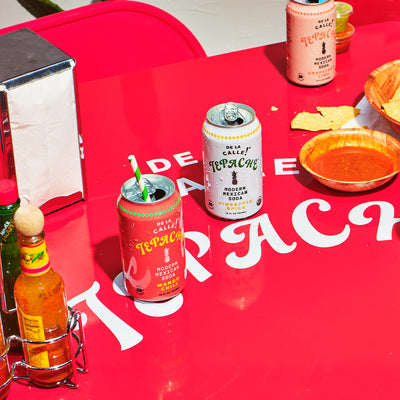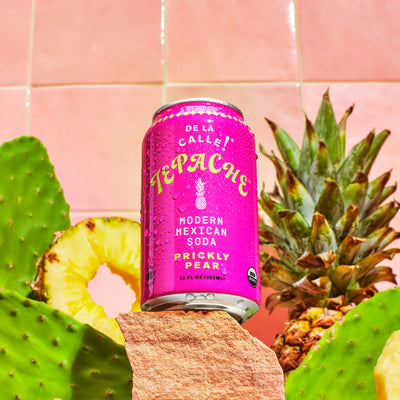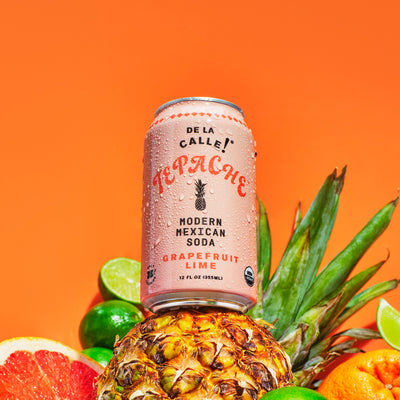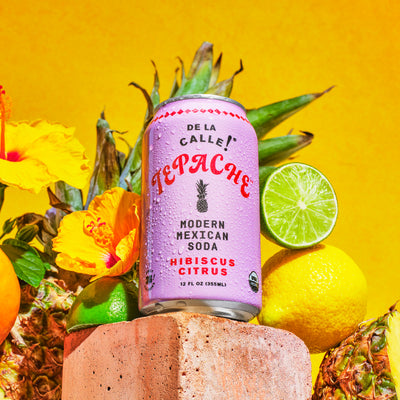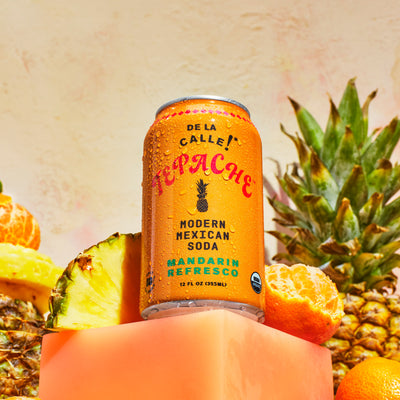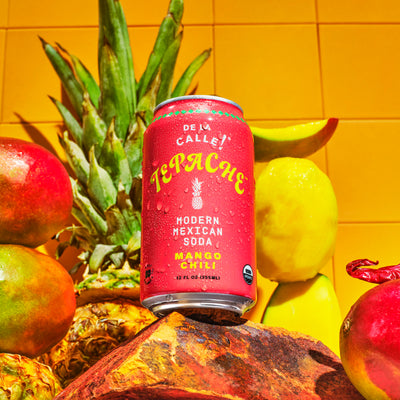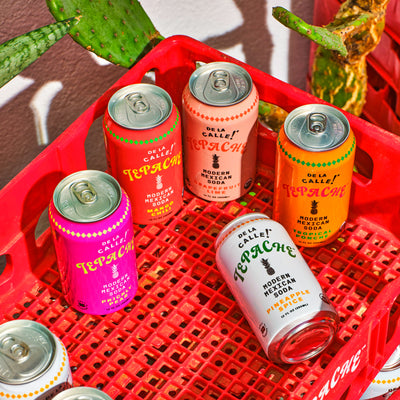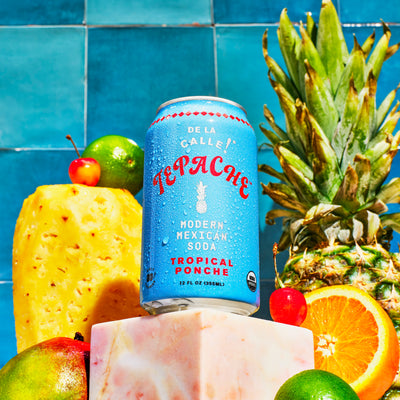Types Of Cactus That Can Be Made Into Drinks

Native to North America, South America, and Central America, cacti are a large part of Mexican cuisine. They can be prepared in a variety of different and delicious ways.
Plus, there is a large variety of different cactus species out there, like Christmas cactus (Schlumbergera bridgesii), Old Man cactus (Cephalocereus senilis), Saguaro Cactus (Carnegiea gigantea), and Feather cactus (Mammillaria plumosa). The industrious succulent stands strong in the desert and keeps its thirst quenched even through long periods of intense drought.
You can check out a few different cacti recipes here. Not only can a wide array of cacti be made into mouth-watering dishes, but the succulent is also a fantastic base for beverages.
Mexican cuisine makes use of plants that may not be the most expected. However, these fantastic fruits and other ingredients always pay off in the final plated or poured product. Take tepache, for example. This drink is made from the fermented rinds of pineapple.
Of course, not all varieties of cacti can be made into drinks. It is important you don’t go sipping on a prickly paddle without first knowing which kind of cactus you’re dealing with.
A beverage that comes to mind when thinking of cacti is cactus water. Much like coconut water, the water of the cactus is said to have certain benefits distinct from other kinds of water.
Beyond cactus water, there are many other drinks that come from cacti. This includes several kinds of mezcal and other alcoholic spirits.
We’ll dive in to check out the various different cacti that can be made into drinks and just what those drinks are.
These desert flowers are much more refreshing than the landscape they live in! Read on to get familiar with the cactus varieties that can be made into drinks!
Nopal Cactus
This cactus is the most commonly utilized for both cooking and making drinks. This cactus grows the ever-prized and wholly useful prickly pear fruit.
The nopal cactus is a deeply ingrained piece of Mexican culture. It has been a staple for hundreds of years. In fact, the Mexican national emblem depicts an eagle standing on a nopal cactus.
The nopal cactus is also commonly referred to as the prickly pear cactus. It is easily recognizable as a result of its flat paddles. These paddles are the “arms of the cactus” and the point from which the fruit grows.
These pads are called nopales or nopalitos, and they can be used in cooking.
You can even eat the nopalitos raw! However, we prefer to grill and season them for optimal enjoyment. Even so, this food is delicious regardless of how you prep it.
Sitting atop the paddle is the prickly pear fruit. This fruit is the source of many of the drinks that cacti become.
This brightly colored fruit is another popular flavor in Southwestern cooking. It can be cooked, candied, and jellied.
With such a wide array of different variations to enjoy, it is no wonder that the nopal cactus has garnered a starring spot in many Mexican drinks and dishes.
Prickly Pear Water
The most commonly sold commercial cactus water is from the prickly pear cactus. This is why it is often seen on shelves with a light pink tint, thanks to the fuschia-colored fruit. The water does not just come pouring out; there is a process.
To get cactus water from the prickly pear fruit, it must be de-spined. One must always take great caution when dealing with the thorns of the cactus.
Next, the fruit is squeezed until it is essentially dehydrated. There you have it: a fiber-rich glass of prickly pear water!
Cactus Vodka
The prickly pear cactus can also be turned into vodka. Talk about a versatile plant!
This vodka can be added to any variety of drinks that require it. The ingredient adds an extra layer of interest.
Vodka made from the prickly pear is made by fermenting not the fruit of the cactus but its paddles. These paddles are carefully selected by distillers to begin the process.
The paddles in their entirety are fermented. After fermentation, the liquid is diluted to lessen the alcohol content.
Cactus-based vodka can have up to a ninety percent alcohol content. The beverage is diluted to forty percent.
Once strained and processed, the cactus vodka is ready to go to market. Pour a splash into your cocktail of choice and enjoy!
Nochotle
The prickly pear cactus is also a key ingredient in a few different traditional Mexican alcoholic beverages, including nochotle.
Nochotle is made from very traditional Mexican ingredients. It is a drink made by adding prickly pear juice and nopal cardón to pulque.
This drink has been enjoyed for centuries. It utilizes the prickly pear's gentle sweetness in a magic way.
Colonche
This is another traditional drink made from the prickly pear cactus. It follows a similar style and recipe to the Nochotle drink above.
Like tepache, colonche is a fermented beverage. It was originally masterminded in central Mexico. The drink is made from macerated cactus fruit and sugar, which is later fermented.
The colonche is served over ice and requires little preparation past the initial fermentation.
The Fishhook Barrel Cactus
This cactus is the only one safe to drink water from in an emergency desert situation. Though you may not find yourself in that position anytime soon, it is helpful to know.
The fishhook barrel cactus is native to the American Southwest and goes by a variety of names. It can be referred to as the Southwestern barrel cactus, the Arizona barrel cactus, or the Arizona candy cactus.
The fishhook barrel cactus can be easily identified by its thick body. They're about two feet in diameter!
The cactus has long hooked spines to set it apart as well. In addition, it grows yellow and red flowers and yellow fruit at the plant’s top. Fishhook barrel cactus grow along desert washes. They prefer dry gravelly soil.
Drinking huge amounts of this cactus water is not recommended. The fishhook barrel cactus is a safer variety of cactus water to drink. However, ingesting large amounts of it may have negative effects.
Though the water from the fishhook barrel may not be the best choice to pair with your meal, it is a great cactus to know about if you are planning any desert endeavors and want to cover all of your survival bases!
Cacti Mania
Who knew a plant known for its sharp spines and desert-loving ways could carry so much refreshment! Cacti aren't just houseplants—although their pink flowers, orange blooms, and yellow flowers make them a beautiful pot for any garden.
These types of cactus plants are the bases for most beverages that boast cactus-based hydration, but there are plenty more to choose from!
Whether you live near the Old Lady Cactus (Mammillaria hahniana), a Star cactus (Astrophytum asterias), a Moon c(Gymnocalycium mihanovichii), or a Bunny Ear Cactus (Opuntia microdasys), these moisture-filled miracles will become your new favorite plant.
Cacti-inspired drinks are getting more and more popular each day, so do not shy away! These versatile succulents may hold the key to your next favorite cocktail.
Enjoy these cacti drinks to your liking—though, hopefully, you won’t be scrambling to find a fishhook barrel cactus anytime soon. But just in case you do, your prickly pals have got you covered.
Sources:
cactus | Description, Distribution, Family, & Facts | Britannica

